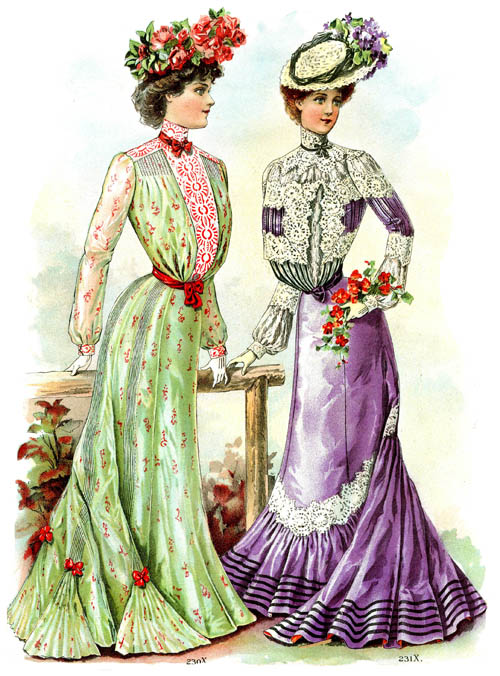|
Home > Victorian Britain > Government > The Post Office
 |
Where would Britain be without its Post Office? This was far more than just a place from which one sent and received mail. In many villages, the Post Office was also part of the "village shop" - one picked up one's mail along with a loaf of bread and perhaps a packet of seeds and one's knitting wool. For many, the Post Office was the equivalent of the bank, and Post Office savings accounts are still in wide use today. Nearly every year, the Illustrated London Almanack would publish a list of the current postal regulations, rates, information on how to get money orders and more. Other articles below offer a look at some of the unusual items that have passed through (or perhaps not quite passed through) the Post Office - including ice cream.
|
- Postal Rates & Regulations - 1845-1888
(Illustrated London Almanack, 1845-1888)
- General postal regulations; hours of operation; prices of stamps; duties of carriers; international rates; ship letter rates; metropolitan carriages and coaches; money orders; rates within British North America; newspapers; book post; foreign & colonial letters; etc. (Not every year between 1845-1888 is included.)
-
1845 •
1846 •
1849 •
1850 •
1851 •
1858 •
1859 •
1860 •
1861 •
1862 •
1865 •
1866 •
1867 •
1868 •
1869 •
1870 •
1871 •
1872 •
1873 •
1874 •
1875 •
1876 •
1876 •
1879 •
1880 •
1881 •
1882 •
1883 •
1884 •
1885 •
1886 •
1887 •
1888
- Colonial and Foreign Postage
(Illustrated London Almanack, 1856)
- Detailed table of postal rates for all the British colonies, and all foreign destination, by class of postage (including Parliamentary Proceedings, periodicals, and printed books).
- The Post Office
(Leisure Hour, 1868)
- Her Majesty's Mails
(Cassell's Family Magazine, 1881)
- Catching the Post, by Thomas Archer
(Cassell's Family Magazine, 1884)
- The Postmen of the World by C.F. Gordon Cumming (Cassell's Family Magazine, 1885)
- Part I looks at India's Camel Express Messengers; China's mail-packets; Hindustan's tappal runners; the pony express; and other mail delivery systems throughout the world. The second part looks primarily at the history of the British postal system.
- The Parcel Post
(Cassell's Family Magazine, 1887)
- Humours of the Post Office
(The Strand, 1891A)
- A look at some oddly addressed envelopes that pass through the Post.
- The Ocean Postal Service, by Thomas L. James
(Century Magazine, 1892A)
- The evolution of a system of ocean mail-steamers between the US and Britain.
- A Peep Behind the Scenes at the Government Post Office, by A. J. Hayes
(Girl's Own Paper, 1892)
- With Her Majesty's Mails to Ireland, by Edward John Hare
(The Strand, 1895A)
- Catching the Mailbags, by R.H. Cocks
(The Strand, 1895A)
- The Modern Mercury: A Quantitative Account of Post Office Work, by J. Holt Schooling
(The Strand, 1896B)
- The GPO [General Post Office] Museum, by Framley Steelcroft
(The Strand, 1897B)
- Curiosities of the Post and the history of the postal service.
- • See also Government Offices, Departments & Services
-
|
The Post Office Savings Bank
|
We're accustomed to "banking" as our means of handling financial transactions. But in Victorian England, the majority of the poor didn't do business with banks at all. Those who wished to put money into "savings" usually did so through the Post Office (and many still do today). A minimum deposit of one shilling was required for a savings account. The Post Office set up a system whereby one could purchase penny stamps and affix them to the card; when the card was full, it added up to the required shilling, which one could deposit and be the proud owner of a new savings account!
- Post Office Savings Banks
(Cassell's Family Paper, 1860)
- Post Office Savings Banks
(Illustrated London Almanack, 1862)
- The Post Office Savings Bank Department, by Edwin Hodder
(Cassell's Family Magazine, 1881)
|
Visit Our Victorian Shop
for:
Books
Coloring Books
Beautiful Spiral Journals
Holiday Greeting Cards
|
|


 Discover thousands of Victorian images in our
Discover thousands of Victorian images in our 